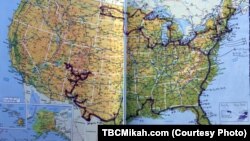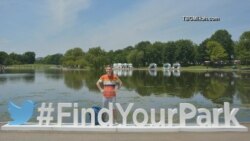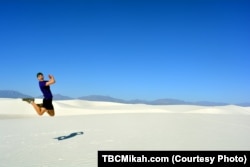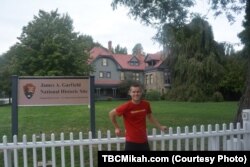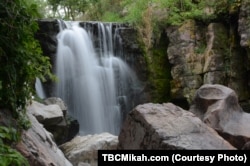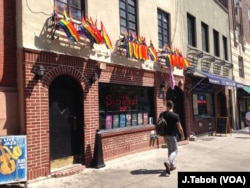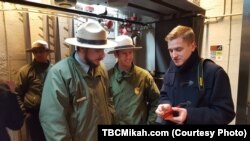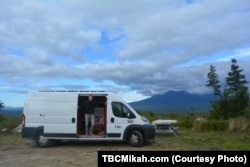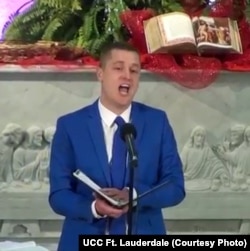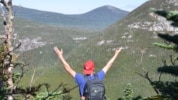About a year ago, Mikah Meyer set out on an ambitious journey -- to visit all 417 national park sites in America. That number includes 59 parks, and countless national monuments, historic battlefields, presidential homes, sacred Native American spaces, oceans, mountains, and more. He estimates it will take him three years to complete his non-stop journey. If he makes it, he will be the youngest person to have visited every national park site in one continuous loop.
World record road trip
His experiences (so far!) have given him rare insight into some of America’s most remarkable natural and man-made wonders.
Mikah has swum with sea turtles and stingrays in the American Caribbean, scaled the highest peaks in the Texas desert, explored mystical caves, hiked Native American trails and visited battlefields where American soldiers spilled their blood a century and a half ago…
Now the young traveler is one third of the way through his epic adventure, which he finds hard to believe.
“My life has become such a rhythm now of, go to a park, document it, plan the next one… that I really haven't had time to sit back and reflect on it... but it certainly feels good to know that within my first year of a three-year journey, I’ve made it to a third of the sites, so I feel like I'm on a good time schedule.”
Road Trip milestone
Mikah reached his 1/3 milestone at White Sands National Monument in the southwestern state of New Mexico.
“I was really happy that I chose this as my 139th site for a third of the way through because it is one of my top four parks now,” he remarked.
With its pure white gypsum sands, the site looks like a winter wonderland. And Mikah treated it like a snowy landscape by hiking up and sledding down its shimmering dunes on a snow board.
White Sands was just one of many national park sites that surprised Mikah. Traveling through the 38 states and territories that he’s visited so far reminded him how unique each place is, given that they’re all within the borders of one country.
From wind and surf on the pristine beaches of Indiana, to the swamplands of southern Florida, to the diverse cultural nuances of New Orleans, Mikah experienced many great sites, in four distinct seasons.
“I've gone to the upper Midwest and the northeast trying to take advantage of where the weather is more temperate so I don't freeze to death in my van,” he said. “But also trying to experience parks when they're at their peak when I can see the fall colors in Maine or when I can reach the trails in the northern Midwest that might be snowed in otherwise,” he explained.
Protecting American history
But his journey is not just about visiting pretty sites.
“I definitely didn't realize how much of the National Park Service was historic sites and historical parks,” Mikah said last fall when he sat down for an on-camera interview with VOA about seven months into his road trip. “I thought everything was natural wonders and everything would be a giant vista or a huge sandbar or some hiking thing.”
But he discovered, “especially in the northeast, I would say 90% of the parks I went to didn't have anything you could hike,” he said. “It was a house, or a downtown of an old city, or a one-acre piece of land that something was signed there.”
That experience made Mikah realize that the National Park Service “protects American history, not just beautiful lands.
A large part of that includes Native American history and culture, which Mikah has been pleased to encounter throughout his journey.
“I think it's interesting to see the way that our National Park Service has worked so hard to tell the story of Native Americans and to include them in the United States history,” he said, adding, “They were here before the 'Founding Fathers' got here, and so it's really cool to see the way that the National Park Service integrates their stories into our collective national story.”
Obama’s legacy
During the first year of Mikah’s road trip, President Obama designated several more national park sites, raising the number from 412 to 417.
One of them was Stonewall National Monument in New York City, which was especially meaningful for Mikah.
“Being that I’m an openly gay person, this is the first National Park Service site dedicated to telling the story of LGBT Americans. Up until this point there hasn't been a site specifically devoted to that. We’ve had ones for women's rights and African American rights, but not for LGBT rights.”
It was particularly personal, Mikah said, as he’d been witness to another historic event a few years earlier. “In January of 2013, I was standing on the National Mall -- which is a National Park Service site -- watching President Obama get inaugurated for the second time. In that speech he talked about Selma, Seneca Falls and Stonewall and I teared up a little bit because it was like who I was, was being acknowledged in public, and that I mattered.”
People matter too!
At Stonewall, and throughout his journey across America's national parks, Mikah has also been impressed with the many park rangers he’s met.
“It’s so humbling for me to meet other rangers. I met a number of LGBT Park Rangers who say 'thank you so much for doing this, my story hasn't been told and now I feel like people acknowledge who I am and that I'm here and I'm a part of this organization.'”
And he met rangers who live in the national park sites and volunteer, sometimes even after they retire. “They were so taken over by these American spaces that they wanted to devote their lives to helping protect and improve it, so definitely meeting the people who care about these places has been so fascinating.”
Mikah decided to embark on his epic journey last year for several reasons: to honor his late father, who instilled in Mikah a love of the great outdoors, to celebrate the National Park Service’s 100th birthday, and to inspire others, particularly the LGBT community and millennials, to set out on their own national park adventures.
Road trip travails
But being on the road has had its challenges, especially since he drives and lives out of a white cargo van that’s been custom designed as his home away from home.
“The logistics of this trip have been way more challenging than I ever imagined,” Mikah said. “The funding of it, the physical aspects of where am I going to eat, where I am going to sleep, where am I going to shower…”
Solar panels on the van's roof feed a battery bank which helps run the fan and a small refrigerator. While driving across the desert in Texas, his solar power system broke down, leaving him without any electricity.
A stranger following him on Facebook helped him get the help he needed to continue his journey.
“I had all but given up,” Mikah recalled, “because nobody in El Paso could get me in for another two weeks and this random local came and he's like, ‘let's go fill up your gas tank, it’s on me!” And he said ‘let me call everyone I know,’ and we found this angel of a man with a solar company who stayed late from work and fixed the thing for me.”
That kind stranger was one of many who’ve helped support and encourage Mikah on his journey. There have also been tour companies and hotels who have provided complimentary tours and rooms so that Mikah could reach all the sites on his list and be able to take a break from the road.
Singing for his supper
Funding for his trip has also been an issue. So Mikah visits churches, where he sings solos and preaches the sermon, and talks about his road trip and the communities he’s trying to educate and inspire, to help raise money for meals and gas.
“I found that by going and speaking and singing in church, I’m not only able to share my music, which is a large part of me, but I’m also able to talk about being an openly gay person, and an openly gay Christian, which a lot of Americans have never met,” Mikah said.
“Churches have been some of the most generous people as far as providing support for me to actually keep this trip sustainable,” he said, “so it's becoming a very, very large part of this story.”
Looking ahead
Mikah is currently in the American Northwest Pacific region of the country, where he’s savoring the cool, lush environment after weeks in the hot, dry desert.
He still has many wonderful sites to explore and share with VOA. And by this time next year, he hopes to have successfully navigated the most difficult national park sites to reach: those in Hawaii, Guam, American Samoa and Alaska. They pose the most challenges logistically, financially and emotionally. Mikah is terrified of bears, and feels he has to be extra vigilant as he will be traveling without his companion Andy Waldron for the next year.
But he believes the next 12 months will offer some of the most exciting experiences of this journey.
“I hope to have experienced the majesty of another 100 sites, and have no bear encounters, so I can return to share about them with you,” he said in an e-mail message to VOA.




